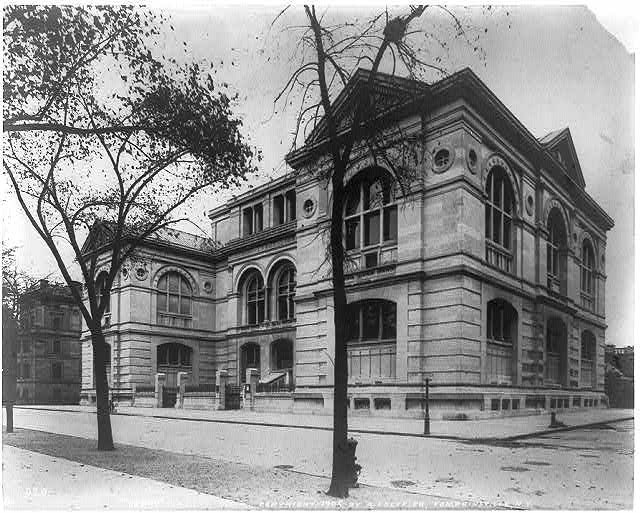Louis Hector Leroux was a French painter in the academic style, affiliated by critics with the Néo-Grecs movement in art. He specialized in meticulously researched paintings of ancient Rome, especially depictions of women. He was best known for a series of some thirty paintings which spanned his entire career, depicting Vestal virgins. His daughter, Laura Leroux-Revault, was also a painter.
Hector Leroux, c. 1875
La Résurrection de Lazare, Leroux's second-place entry to the Prix de Rome in 1857; Musée d’Orsay
Leroux painted by Henner in Rome, 1861
Vestale Endormie (1880), private collection
Néo-Grec was a Neoclassical Revival style of the mid-to-late 19th century that was popularized in architecture, the decorative arts, and in painting during France's Second Empire, or the reign of Napoleon III (1852–1870). The Néo-Grec vogue took as its starting point the earlier expressions of the Neoclassical style inspired by 18th-century excavations at Pompeii, which resumed in earnest in 1848, and similar excavations at Herculaneum. The style mixed elements of the Graeco-Roman, Pompeian, Adam and Egyptian Revival styles into "a richly eclectic polychrome mélange." "The style enjoyed a vogue in the United States, and had a short-lived impact on interior design in England and elsewhere."
Neo-Grec architecture in the tomb of actor Bogumil Dawison in Dresden, Germany
Bibliothèque Sainte-Geneviève (1843–1850), Paris, Henri Labrouste, architect
Lennox Library (1871–77, demolished 1910), Manhattan, New York City, Richard Morris Hunt, architect
Northern Savings Fund Society (1871–72), Philadelphia, Pennsylvania, Frank Furness, architect








